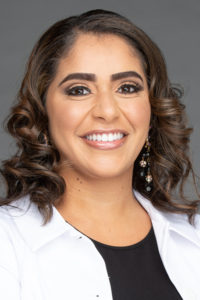Following decades of clinical management with angiotensin-converting enzyme (ACE) inhibitors, beta blockers, diuretics, and other marginally effective agents, recent trials of angiotensin receptor-neprilysin inhibition (ARNI) and sodium-glucose cotransporter-2 (SGLT2) inhibitors are poised to revolutionize the care of patients with heart failure. But only if these highly effective agents are actually used in everyday clinical practice.

“We have seen great science in the development of ARNI and SGLT2 agents, but great science doesn’t save lives,” said Michelle M. Kittleson, MD, PhD, Director, Heart Failure Research, and Professor of Medicine at the Smidt Heart Institute, Cedars-Sinai Hospital. “Great science plus effective implementation equals lives saved. Through pioneering work of clinical trialists, there are now amazing therapies. We want to equip clinicians with the knowledge and tools to effectively implement them in practice so the research translates into lives saved.”
Dr. Kittleson will discuss advances in the treatment of heart failure with reduced ejection fraction (HFrEF) during the two-hour session Translating Diabetes and Heart Failure Clinical Trial Findings into Clinical Practice, which will begin at 8:00 a.m. ET Tuesday, June 29. Nasrien E. Ibrahim, MD, Director of Heart Failure Clinical Research, Inova Heart and Vascular Institute, will examine recent advances in treating heart failure with preserved ejection fraction (HFpEF).
“We have no Class I recommendations for therapies to help patients with HFpEF,” Dr. Ibrahim said, “so it can be very challenging to manage them. We have a huge armamentarium of therapies to reduce morbidity and mortality from HFrEF, but we don’t have medications for HFpEF. I do believe they are coming.”

The clinical tide for HFrEF turned in 2014 with the publication of the PARADIGM-HF trial that demonstrated the resounding superiority of ARNI over ACE inhibitors, then the standard of care, Dr. Kittleson explained. The 2019 DAPA-HF trial supported the use of dapagliflozin, the first SGLT2 inhibitor with proven heart failure benefits.
For patients with heart failure and ejection fraction below 40%, guideline-directed therapy with these new agents offers the best chance for increased quality of life and survival, Dr. Kittleson said. And there are multiple practical considerations to initiate and titrate treatment.
HFpEF treatment is moving in the same direction. PARAGON-HF study data show benefit for patients with preserved ejection fraction greater than 45%, Dr. Ibrahim noted. SOLOIST-WHF and SCORED, published in late 2020, found that sotagliflozin, a combined SGLT2 and SGLT1 inhibitor, can reduce cardiovascular events and improve glycemic control across the spectrum of left ventricular ejection fraction (SOLOIST-WHf).
“We need more data from ongoing trials,” Dr. Ibrahim said, “but there is potentially light at the end of the tunnel with therapies that could improve outcomes for patients. This is an exciting time for HFpEF.”
As heart failure science advances, it is becoming clear that improving patient outcomes depends largely on overcoming therapeutic inertia, Dr. Ibrahim said. Physician inertia is a major factor, she said, but so is patient inertia, due largely to lack of information about new treatments.
Systemic inertia is another barrier, particularly as it relates to insurance coverage, cost, and copays. Copays for a novel agent can range from zero to hundreds of dollars depending on formulary and other coverage details. Uninsured patients face even higher barriers.
“Heart failure is common in patients with diabetes. The problem is growing and you need to be well equipped to help your patients with heart failure feel better and live longer,” Dr. Kittleson said. “This session is your chance to learn what, when, where, and how to give these new agents to your patients with heart failure to help improve their lives.”[gap]
VIEW THIS PRESENTATION
Already registered?
View this presentation at ADA2021.org
Not yet registered?
Register now to access all presentations from the Virtual 81st Scientific Sessions